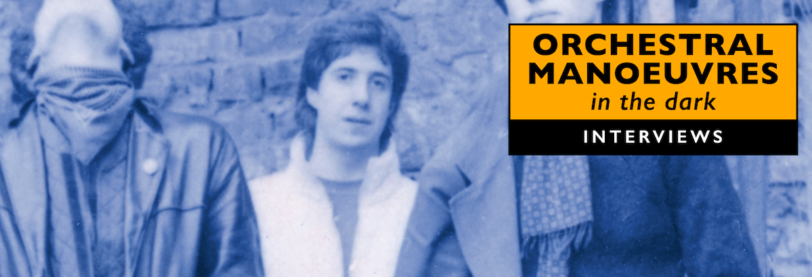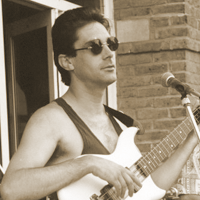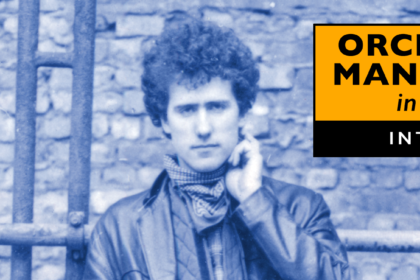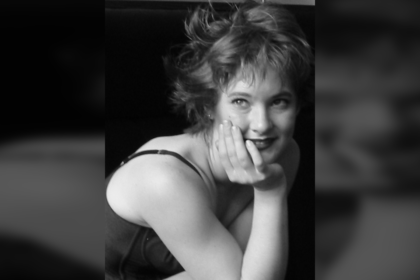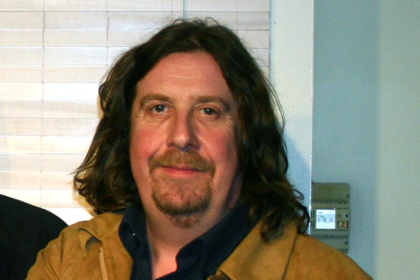“Whatever OMD had was really fixed in concrete on that first album…”
Originally released in 1980, OMD’s debut album Orchestral Manoeuvres In The Dark featured some of the most iconic OMD songs, including ‘Electricity’, ‘Bunker Soldiers’ and ‘Messages’. The sleeve design (by Peter Saville and Ben Kelly) for the album was built around a die-cut concept that also marked it out as an instant design classic.
In 2003 the album was reissued featuring remastered tracks taken from the original master tapes for the album. The reissue also boasted bonus tracks along with sleeve notes, photos and restored artwork. As part of the process of penning the sleeve notes, Paul Browne interviewed the band to collect their thoughts on Orchestral Manoeuvres In The Dark as an album then and now.
What are your feelings about the songs that feature on Orchestral Manoeuvres In The Dark?
A lot of the songs came from The Id days so the first album, for me, has always been a bit of a cross-over between what we achieved at the end of The Id days and OMD. The way it crossed over was a very natural thing.
I always think of it as part of our first steps into music really, my first band being The Id. From memories of The Gramophone Suite and meeting Tony Wilson for the first time. It was just our first step into the music business really. So many bands now days try so hard to get into the industry. The first album was just so natural, no one had to try and it was really brand new. 25 years on I look at the people that are still trying to struggle to get into the business. Whatever OMD had was really fixed in concrete on that first album.
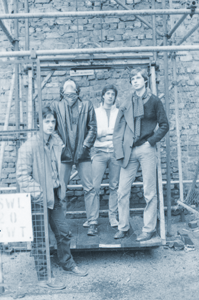
Did you ever sense that OMD were going to be as successful as they later became?
No. Never even thought about it. Didn’t even cross my mind – it was just something that we were doing at the time. We’d all played in bands and years of doing gigs and this was just another extension of it.
We went over to Holland and we did a gig there and then we did a couple more gigs in the UK and this whole thing was going on. And it wasn’t really until I think ‘Messages’ and the first Top Of The Pops we did, when we were over in Belgium, that it really dawned on me that, you know, you’re on the flight back immediately and that you’re on Top Of The Pops on Tuesday and it was at that point there really that I thought “Fucking hell, this is probably going to be more serious than I thought it was going to be!”
What songs stand out for you on the album?
One of my favourite tracks, ever, ever, ever is ‘The Messerschmitt Twins’. I really love it and it took years for that to grow on me. We never played ‘The Messerschmitt Twins’ live and I was thinking that this was a classic song, really great song. So real, real old time favourite – and the original version of ‘Messages’.
It must have been strange at the time to have this really radical version of ‘Messages’.
There’s the single version of ‘Messages’ which is pop hit single stuff – Mike Howlett did exactly what was meant to be done on the single. But I think the original version of ‘Messages’ has just got real magic and real charm to it. Just timeless. Same as with ‘The Messerschmitt Twins’ – those two really are great tracks.
What was it like working in The Gramophone Suite compared to other studios?
What’s the difference? Well nothing worked in The Gramophone Suite for a start! (laughs) But it was only half-built. My dad helped build some of the things in the studio.
The Gramophone Suite was really a rough-arsed demo studio; it was great for hacking ideas down there. But I just remember it as cabling everywhere; bits of tape recorder here, there and everywhere with Paul Collister; electronic drum kit parts being built in the corner. It was more like a garage workshop than like The Manor or something like that! (laughs) It was a real nuts-n-bolts recording studio if you like.
Original interview by Paul Browne 2003
Revised text 22nd February 2020

